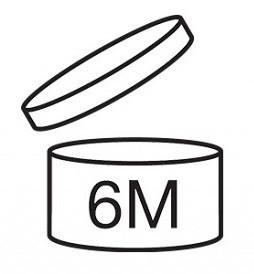What makes a foundation better than another? On the shelf, it can be really hard to discern the difference, what with every brand trying to market themselves as the best.
A lot of cosmetic products appear interesting and appealing, but that doesn’t mean all of them are as efficient and safe as you might think. Many products contain ingredients you may want to avoid, like those that can be sensitising and irritating, or ingredients that can even be harmful to you.

Source: Beauty Heaven
To combat this, we strongly encourage everyone to get to know and understand your cosmetic labels. We know, all the ingredients and scientific jargon are a little scary, but it’s better to know what is actually going on and in our bodies!
We’ve helped you break down the important things you need to look out for in ingredient labels, in the simplest possible way.
1. Don’t put too much trust in fancy claims

There are no FDA regulations that govern the use of terms like “hypoallergenic” and “non-comedogenic” on cosmetic products. A company could be using them on their marketing campaigns whether they’ve actually done extensive testing or not.
If you have sensitive skin, avoid products with fragrances or allergens like propylene glycol. You should be going for skincare and makeup products that have the simplest and shortest ingredient labels. This may mean getting preservative-free products, which necessarily shorten its lifespan, but better than damaging your skin, right?
Prone to breakouts? Be wary of “oil-free” claims — an oil-free product can still be pore-clogging, or comedogenic. Unfortunately, there’s no other way except to find what works for your skin except by trial and error.
Remember, the claim that something is “dermatologist tested” doesn’t equate to the product being “dermatologist endorsed”.
2. Overly condensed ingredient lists

On many online shops or brand websites, you wouldn’t be able to find the complete list of ingredients for most products. Instead, companies opt to provide a glimpse into the “key ingredients” (also coincidentally the ones that read the best) and leave the rest out.
Of course, a simpler list is much easier to read and appeals to the masses, but it’s also a subtle form of marketing.

Chamomile
For instance, this particular product page only mentions chamomile, green tea, and aloe as its active or key ingredients. However, for all we know, these ingredients may actually be found nearer the bottom of the complete ingredient list, which would mean that they’d only be present in tiny, almost insignificant amounts within the product.
To really dig deep into your product, you’ll need to consult the trusty label on the product itself, where brands are legally required to list every single ingredient.
3. Ingredients are listed in descending order

Source: Green Beauty Junkie
The ingredient lists that you see on products have a set order: they begin from the one present in the highest concentration (usually water or aqua), and then they go on in decreasing order from there.

If you notice a chemical that you may be sensitive to listed near the top, this is definitely not a good sign. You should try to avoid these chemicals altogether, but if they’re found lower down on the list, there is a chance they may be present in such a tiny concentration that you may not have a reaction – but this is all at your own risk.
4. Know how safe commonly used chemicals are

This Cosmetic Ingredient Dictionary from Paula’s Choice is the holy grail to translating all the scientific jargon. When shopping, this is our personal go-to beauty consultant. It contains the definitions of hundreds of cosmetic ingredients – it’s accessible from a mobile device too!
A total lifesaver, it includes the technical as well as the non-technical names of ingredients, what their purpose is, how they work, and even research supporting their use in cosmetics. Soon enough, you’ll become familiar with the common ingredients and be able to identify ‘nasties’ like a boss.
5. Learn this symbol by heart

Although the expiration date symbol is not a global requirement, you will probably find it on most of your skincare products. This Period After Opening (PAO) symbol indicates how many months the product is safe to use after the date you first open it (whether or not you’ve used it!). In the example above, 6M means the product is good for 6 months after it has been opened.
Over time, bacteria and other microbes can come into contact with our beauty products and cause them to go bad, so it’s important to keep an eye out for this symbol. If you can’t find this symbol on your products, try looking for an expiration date, or searching online for expiry date calculators. For more tips on managing your products so you won’t use them after they’ve expired, check out our guide to beauty products and their expiry dates.
Featured image from Beauty Heaven.


